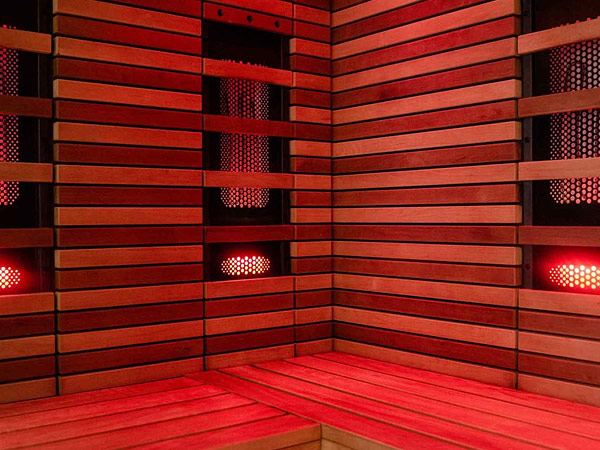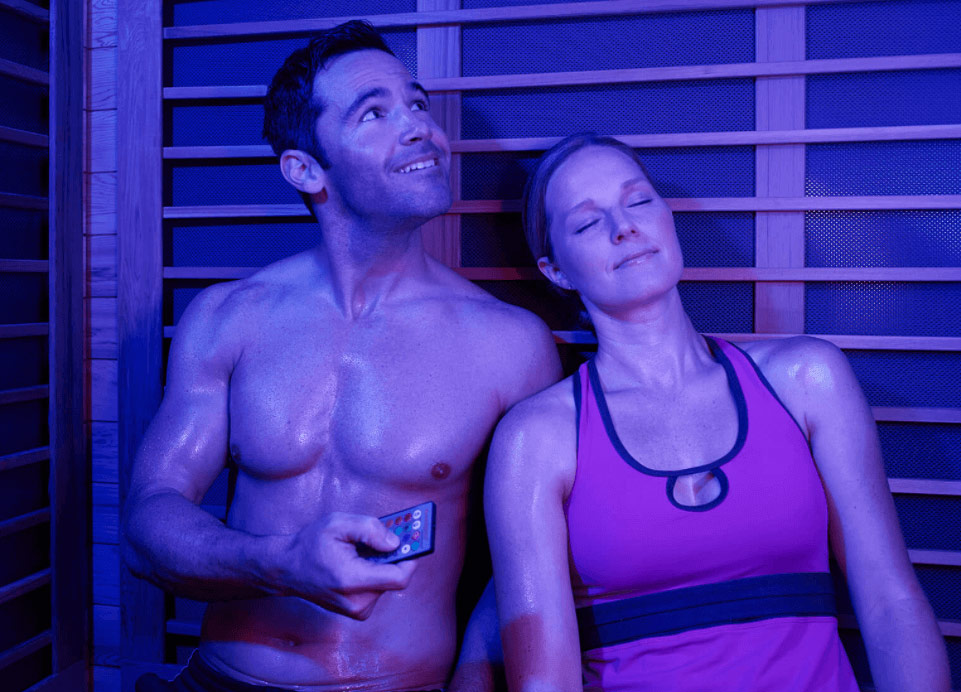Have you ever questioned whether or not infrared saunas live up to their reputation? Do they provide the health advantages that have been widely advertised online? Knowing the truth about infrared saunas is critical when stress relief and body cleansing are required. Come with us as we explore the tales surrounding these warm, sweat-inducing rooms.
Infrared saunas have been more popular in recent years because of their purported benefits for weight reduction, skin health, and even stress relief. But what exactly is the tale that has everyone talking? In this post, we'll examine the research and data supporting the health benefits of infrared saunas to see if they're more than simply a marketing gimmick.
However, these misconceptions regarding infrared saunas scratch the surface. We've consulted a top authority on complementary and alternative medicine to help us review the claims and offer some clarity. Understanding the misconceptions, advantages, and possible hazards of infrared saunas is essential to making educated decisions about your health and happiness. For health and well-being, let's get right into this illuminating journey into the infrared sauna realm.
Infrared Sauna Therapy: What Exactly Is It?
Heat from an infrared sauna may be healthy. Radiant heat from infrared heaters is absorbed by the skin, as opposed to the steam or hot air used in conventional saunas. Methods of infrared sauna treatment include:
- Infrared Radiant Heat: Infrared heaters generate low-level electromagnetic radiation that is invisible to the human eye yet warms the body thoroughly from within. This warmth resembles the sun's but without the potentially dangerous UV radiation.
- Temperature Control: When compared to conventional saunas, infrared saunas are frequently operated at cooler temperatures (commonly between 120°F and 150°F or 50°C and 65°C). People are, therefore, able to withstand the heat for longer periods.
- Health Benefits: Advocates of infrared sauna therapy claim various health benefits, including:
- Detoxification: The sauna's ability to generate sweating may facilitate the excretion of poisons and metals.
- Relaxation: The mild heat has been shown to increase endorphin synthesis, the body's natural feel-good chemicals, encouraging relaxation and reducing stress.
- Pain Relief: Since heat has been shown to increase blood flow and decrease inflammation, it may help alleviate pains and aches in muscles and joints for certain people.
- Improved Circulation: Infrared heat increases blood flow and potentially benefits cardiovascular health.
- Weight Loss: Regular sauna usage may help with calorie burning and weight control, but it is not an effective weight loss approach.
- Different Types: Far-infrared saunas, mid-infrared saunas, and near-infrared saunas are the three main categories of infrared saunas. The therapeutic advantages of these modalities differ slightly depending on the specific infrared radiation wavelength employed.
- Safety Considerations: Careful usage of infrared saunas is required, as is adherence to safety recommendations regarding temperature and time spent in the sauna to prevent overheating and dehydration. Before utilising an infrared sauna, those with specific medical issues or pregnant women should talk to a doctor.
Common Myths About Infrared Saunas
Skin Damage From Infrared Saunas
When it comes to skincare, infrared saunas are among the top options. Toxins in the bloodstream can be flushed out through sweat using an infrared sauna. This procedure also cleans up your pores, leaving you with a smoother, more radiant complexion.
UV Radiation Is Emitted From Infrared Saunas
Infrared saunas provide an innocuous kind of radiation that is not harmful to cells. Using an infrared sauna will not cause cancer or any other type of cell mutation. During therapy, infrared saunas increase quality of life for cancer patients.
No Health Benefits From Infrared Sauna Use

Reducing muscular and joint discomfort using an infrared sauna has been demonstrated in several studies to hasten the recovery time after a strenuous workout or performance. Because they boost your metabolism, they also facilitate rapid fat loss. Toxins like cadmium, lead, and aluminium, which build up in your tissues over time, can be eliminated using an infrared sauna.
High Operating Costs
It used to be true that having a sauna meant a significant increase in your monthly electricity expenditure. Older kinds of saunas require large amounts of electricity to overheat the space and force you to sweat by overheating your lungs. If you use it daily, the electric bill might easily reach hundreds of dollars monthly. That's because they needed an hour or more to get up to temperature and then another hour of full power while you used it.
Most infrared saunas may be heated up in 10 minutes and use as much power as a regular hair dryer. That's a monthly cost savings of several hundred dollars. Daily use of a high-quality infrared sauna costs only $3.50 to $4.00 in electricity. About 25 cents for each application! You may even locate infrared saunas that work with your home's electrical wiring. Any increase in your power bill should be minimal, depending on how often you use your sauna.
Dehydration Occurs In Infrared Saunas
Long-term use of an infrared sauna is not recommended. You should feel energized and energized if you use an infrared sauna for the recommended 15-30 minutes. However, infrared saunas promote sweating if used longer than recommended, so it's important to replenish lost fluids both in the sauna and afterwards.
Mould Is Dangerous And Requires Steam.
Steam is a hallmark of the classic sauna experience. Cedar is commonly used in these structures with its strong scent and natural resistance to mould and mildew. Yet, infrared saunas deviate from the norm. Because they don't use steam, infrared saunas can't help you sweat. Instead of requiring a superheated steamy environment, these saunas employ ceramic heating elements to provide a mild heat that warms the skin and activates the sweat glands from the outside. You'll still sweat in an infrared sauna because of the heat. However, because your internal temperature won't rise, you can stay in the sauna much longer without feeling uncomfortable.
The Intense Heat of an Infrared Sauna
Infrared saunas are designed to warm the body without heating the air, while traditional saunas heat the air to temperatures between 150 and 180 degrees Fahrenheit. As a result, the temperature inside an infrared sauna won't feel any higher than roughly 120 degrees Fahrenheit. Many people who regularly use saunas have moved to infrared saunas due to the lower temperature, which is far more pleasant for the user.
Saunas Are Only For Cold Climates.
A sauna's benefits can be appreciated by everybody, regardless of the environment. The health benefits of infrared saunas are not limited to those who live in colder areas. For decades, residents of warmer places like Florida, California, Arizona, Texas, and others have been adding infrared saunas to their homes.
In the Amazon, South Africa, and Australia, even doctors prescribe infrared saunas to their patients. An infrared sauna can be used at home without regard to latitude or longitude. Since you won't have to worry about inclement weather or temperature extremes while your sauna is indoors, you may enjoy it whenever you choose.
Expensive To Buy

It's understandable if you think investing in a far infrared sauna wastes your hard-earned cash. But you can get one of these saunas for your house, which won't break the bank. An affordable far infrared sauna exists regardless of your financial situation. It will only cost you cents a day to use on average if you choose one handcrafted and backed by a lifetime warranty. It's a long-term commitment to your health.
Facts About Portable Sauna
Despite its rising popularity, many people still need to understand what an infrared sauna is and how it works. Misinformation about the infrared sauna prevents many people from experiencing its full benefits. We'll bust some myths about the most popular topics to give you a complete picture.
Homeowners Can Afford Infrared Saunas
An infrared sauna is more cost-effective than a regular sauna for the house. The monthly cost of using an infrared sauna might be as little as $10 if you use it three times each week. In contrast, typical saunas have monthly operating costs of $20 to $30.
To reach a more precise figure, multiply the heater's kilowatt rating by the local cost per kilowatt hour (which may be found on the energy bill). The total sum will give you an accurate picture of the annual cost of operating the infrared sauna.
Traditional steam saunas range in price from around $10,000 to $30,000. That's equivalent to spending three times as much on an infrared system. Getting into and maintaining an infrared sauna will save you money.
The Infrared Sauna Has Many Health Benefits
People often undervalue the benefits that infrared saunas can provide. A 2018 study found that regular sauna use reduced the risk of cardiovascular events like stroke, high blood pressure, and death from the heart.
According to research, heat therapy has many health benefits, including lowering blood pressure, improving microvascular and endothelial function, and reducing arterial stiffness. Therefore, it can be useful for:
- Relaxation
- Skin complexions
- Better circulation
- Sleep
- Joint pain
- Stress and anxiety
- Chronic fatigue
- Muscle soreness
According to randomised clinical research, people with chronic fatigue syndrome can benefit from using an infrared sauna as part of their treatment plan. Muscles were less painful and recovered faster, thanks to the heat. However, it was also found to be effective in controlling blood pressure.
Each Infrared Sauna Affects Differently
Although infrared saunas may all appear the same on the outside, there is much more to them than meets the eye. It is necessary to confirm its emissivity and core temperature increase before drawing any conclusions on its detoxifying potential. Infrared saunas don't merely warm the air around their users; they also raise body temperature and encourage the release of accumulated toxins. For instance:
- A far-infrared sauna could be a wonderful option if you're looking for a way to relax while still getting a decent sweat. Popular among those looking to improve their quality of life by lessening pain, fatigue, and stiffness.
- The near-infrared sauna has been shown to have a more potent effect by increasing cellular ATP synthesis. Popular health benefits include increased blood flow, collagen formation, cartilage repair, and skin enhancement.
In essence, these saunas aim to induce beneficial perspiration on a cellular level. The goal is to stimulate the body's wellness by eliminating as many toxins as possible through sweating. Half of the radiated heat is infrared, and the other half is hot air.
The sauna's effectiveness and quality will change depending on your chosen materials. Because of this, many individuals think an infrared sauna provides the optimal setting for detoxification. You may save money and receive great results from an infrared sauna.
An Infrared Sauna Can Ease Your Ache
People with rheumatoid arthritis can experience relief from their joint pain by using an infrared sauna. It made a difference in their day-to-day lives by reducing pain and easing discomfort. The sauna has a calming effect on the body by widening and relaxing the blood vessels. This improves circulation, which in turn eases muscular and joint pain.
This impact is why infrared saunas have gained popularity among those seeking relief from chronic pain and arthritis. Chronic pain conditions like fibromyalgia and headaches may also benefit from these changes. The results of a clinical trial conducted on individuals with fibromyalgia and administered thermal therapy in 2011 were analysed by specialists.
Assessments of the patient's quality of life, pain, and discomfort were performed using a combination of sauna and underwater exercises. All patients treated saw an improvement in pain from 31% to 77% after the intervention.
The sauna treatment lessened their suffering and enhanced their quality of life. Patients suffering from chronic headaches reported the same result. Volunteers who tried sauna in a study conducted in 2015 reported much less severe headaches afterwards. Regular use of a sauna was a successful, self-managed treatment. Therefore, an infrared sauna is beneficial for joint pain and other types of pain. It's adaptable, effective, and practical as a home remedy.
Conclusion
Infrared saunas are becoming more popular because they are thought to help with things like weight loss, skin health, and stress relief. But there are some false ideas about saunas that can lead people astray. Infrared saunas get their heat from low-level electromagnetic radiation, which is unnoticeable to the human eye but warms the body all the way through. This warmth is like the warmth from the sun, but without the harmful UV rays.
Infrared saunas can help your body get rid of toxins, rest, relieve pain, improve circulation, and even help you lose weight. Far-infrared, mid-infrared, and near-infrared are the three main types of infrared spas. Depending on which wavelength of infrared radiation is used, the benefits of these treatments change slightly.
When using an infrared sauna, it's important to think about safety and follow the suggestions for temperature and time in the sauna. People with certain health problems or who are pregnant should talk to a doctor before using an infrared sauna.
Infrared saunas can help get rid of toxins in the bloodstream by making you sweat. This can help clean your pores and make your skin smoother. But they don't help your health, even though they can ease muscle and joint pain, speed up your metabolism, and help you lose fat quickly.
Infrared saunas can have high running costs because they use a lot of electricity to heat up the room and make people sweat. Most infrared saunas, on the other hand, can be heated up in 10 minutes and use the same amount of electricity as a regular hair dryer. This saves money on energy bills.
Long-term use is not advised because they make you sweat if you use them longer than recommended. Infrared saunas don't use steam, which is one of the most important parts of a traditional sauna. Instead, they use ceramic heating elements that give off a light heat that warms the skin and makes sweat glands work from the outside.
Infrared saunas are good for your health in many ways, like lowering your blood pressure, making your microvascular and endothelium function better, and making your arteries less stiff. They can help you rest, clear up your skin, improve your circulation, sleep, deal with joint pain, stress, anxiety, chronic fatigue, and sore muscles.
Infrared spas do more than what they look like from the outside. People use far-infrared saunas to rest and sweat, while near-infrared saunas have a stronger effect by boosting ATP production in cells. The goal of these saunas is to make you sweat on a cellular level, which is good for your health because it gets rid of as many toxins as possible.
Infrared baths can also help with joint pain by reducing pain and making you feel better. The sauna treatment has been shown to help people with chronic pain and arthritis feel less pain and live a better life. Regular use of an infrared sauna as a home cure is flexible, helpful, and easy.
Content Summary
- Infrared saunas have gained popularity for their numerous health benefits.
- These saunas offer potential benefits like weight reduction and skin health improvement.
- It's vital to differentiate between marketing gimmicks and actual health benefits.
- Expert insights from complementary and alternative medicine were consulted.
- Infrared sauna heat differs from that of traditional saunas, focusing on radiant heat.
- The heat from infrared saunas penetrates and warms the body directly.
- Unlike the sun, infrared heat does not have harmful UV radiation.
- Infrared saunas usually operate at cooler temperatures than conventional saunas.
- Cooler temperatures mean users can endure longer sessions.
- Advocates believe in the detoxifying power of infrared saunas.
- The saunas are thought to help release toxins and metals through sweat.
- Mild heat from these saunas can stimulate endorphin production.
- Infrared heat could help alleviate pain and inflammation in muscles.
- Sauna sessions might promote better blood circulation.
- Weight loss claims related to saunas need more scrutiny.
- There are three main types of infrared saunas: far, mid, and near-infrared.
- The benefits differ based on the specific infrared radiation wavelength.
- Using infrared saunas requires adherence to safety guidelines.
- Consultation with a doctor is essential, especially for pregnant women or those with specific medical issues.
- Infrared saunas can benefit skincare and help cleanse pores.
- They don't emit harmful UV radiation.
- Infrared saunas don't pose a risk of causing cancer.
- Using infrared saunas can speed up recovery after intense workouts.
- These saunas might help in eliminating toxins such as lead and aluminium.
- The misconception that infrared saunas are costly to run has been debunked.
- Modern infrared saunas are energy-efficient and cost-effective.
- Overusing an infrared sauna can lead to dehydration.
- Steam is not used in infrared saunas, which makes them less steamy than traditional ones.
- Infrared saunas warm the body directly without heating the surrounding air.
- These saunas are suitable for all climates, not just cold regions.
- Far infrared saunas can be affordable investments in health.
- Portable saunas are gaining traction.
- Homeowners can easily afford infrared saunas.
- Operating costs for infrared saunas can be lower than traditional saunas.
- The health benefits of infrared saunas are often undervalued.
- Studies indicate potential cardiovascular benefits from regular sauna use.
- Infrared saunas could assist in relaxation, sleep, joint pain relief, and more.
- Different types of infrared saunas offer varying benefits.
- Far-infrared saunas are great for relaxation and reducing pain.
- Near-infrared saunas can boost blood flow and improve skin.
- Saunas stimulate detoxification by promoting beneficial perspiration.
- Infrared saunas can potentially relieve pain for arthritis sufferers.
- By improving circulation, these saunas can alleviate muscle and joint pain.
- Infrared saunas are now popular among those with chronic pain conditions.
- A study in 2011 revealed the benefits of thermal therapy for fibromyalgia patients.
- Sauna treatments were found to reduce pain and improve life quality.
- In 2015, a study showed sauna use could lessen the severity of headaches.
- Regular sauna use can be a self-managed treatment for chronic headaches.
- Infrared saunas are considered beneficial for joint pain.
- They offer a practical home remedy for various types of pain.
FAQs About Sauna
Infrared saunas are generally safe for most people with cardiovascular conditions. However, it's advisable to consult a doctor before use.
No, Infrared saunas emit safe, low-level electromagnetic radiation that is not harmful to the body. They are different from harmful ionizing radiation.
Yes, Infrared saunas can provide pain relief by relaxing muscles, reducing inflammation, and promoting blood flow to injured areas.
Infrared saunas promote relaxation and the release of endorphins, which can significantly reduce stress and anxiety.
You don't need special equipment or clothing, but wearing loose, comfortable clothing and staying hydrated during a session can enhance the experience and benefits of an Infrared sauna.
Conclusion
Infrared saunas are becoming more popular because they are thought to help with things like weight loss, skin health, and stress relief. But there are some false ideas about saunas that can lead people astray. Infrared saunas get their heat from low-level electromagnetic radiation, which is unnoticeable to the human eye but warms the body all the way through. This warmth is like the warmth from the sun, but without the harmful UV rays.
Infrared saunas can help your body get rid of toxins, rest, relieve pain, improve circulation, and even help you lose weight. Far-infrared, mid-infrared, and near-infrared are the three main types of infrared spas. Depending on which wavelength of infrared radiation is used, the benefits of these treatments change slightly.
When using an infrared sauna, it's important to think about safety and follow the suggestions for temperature and time in the sauna. People with certain health problems or who are pregnant should talk to a doctor before using an infrared sauna.
Infrared saunas can help get rid of toxins in the bloodstream by making you sweat. This can help clean your pores and make your skin smoother. But they don't help your health, even though they can ease muscle and joint pain, speed up your metabolism, and help you lose fat quickly.
Infrared saunas can have high running costs because they use a lot of electricity to heat up the room and make people sweat. Most infrared saunas, on the other hand, can be heated up in 10 minutes and use the same amount of electricity as a regular hair dryer. This saves money on energy bills.
Long-term use is not advised because they make you sweat if you use them longer than recommended. Infrared saunas don't use steam, which is one of the most important parts of a traditional sauna. Instead, they use ceramic heating elements that give off a light heat that warms the skin and makes sweat glands work from the outside.
Infrared saunas are good for your health in many ways, like lowering your blood pressure, making your microvascular and endothelium function better, and making your arteries less stiff. They can help you rest, clear up your skin, improve your circulation, sleep, deal with joint pain, stress, anxiety, chronic fatigue, and sore muscles.
Infrared spas do more than what they look like from the outside. People use far-infrared saunas to rest and sweat, while near-infrared saunas have a stronger effect by boosting ATP production in cells. The goal of these saunas is to make you sweat on a cellular level, which is good for your health because it gets rid of as many toxins as possible.
Infrared baths can also help with joint pain by reducing pain and making you feel better. The sauna treatment has been shown to help people with chronic pain and arthritis feel less pain and live a better life. Regular use of an infrared sauna as a home cure is flexible, helpful, and easy.
Content Summary
- Infrared saunas have gained popularity for their numerous health benefits.
- These saunas offer potential benefits like weight reduction and skin health improvement.
- It's vital to differentiate between marketing gimmicks and actual health benefits.
- Expert insights from complementary and alternative medicine were consulted.
- Infrared sauna heat differs from that of traditional saunas, focusing on radiant heat.
- The heat from infrared saunas penetrates and warms the body directly.
- Unlike the sun, infrared heat does not have harmful UV radiation.
- Infrared saunas usually operate at cooler temperatures than conventional saunas.
- Cooler temperatures mean users can endure longer sessions.
- Advocates believe in the detoxifying power of infrared saunas.
- The saunas are thought to help release toxins and metals through sweat.
- Mild heat from these saunas can stimulate endorphin production.
- Infrared heat could help alleviate pain and inflammation in muscles.
- Sauna sessions might promote better blood circulation.
- Weight loss claims related to saunas need more scrutiny.
- There are three main types of infrared saunas: far, mid, and near-infrared.
- The benefits differ based on the specific infrared radiation wavelength.
- Using infrared saunas requires adherence to safety guidelines.
- Consultation with a doctor is essential, especially for pregnant women or those with specific medical issues.
- Infrared saunas can benefit skincare and help cleanse pores.
- They don't emit harmful UV radiation.
- Infrared saunas don't pose a risk of causing cancer.
- Using infrared saunas can speed up recovery after intense workouts.
- These saunas might help in eliminating toxins such as lead and aluminium.
- The misconception that infrared saunas are costly to run has been debunked.
- Modern infrared saunas are energy-efficient and cost-effective.
- Overusing an infrared sauna can lead to dehydration.
- Steam is not used in infrared saunas, which makes them less steamy than traditional ones.
- Infrared saunas warm the body directly without heating the surrounding air.
- These saunas are suitable for all climates, not just cold regions.
- Far infrared saunas can be affordable investments in health.
- Portable saunas are gaining traction.
- Homeowners can easily afford infrared saunas.
- Operating costs for infrared saunas can be lower than traditional saunas.
- The health benefits of infrared saunas are often undervalued.
- Studies indicate potential cardiovascular benefits from regular sauna use.
- Infrared saunas could assist in relaxation, sleep, joint pain relief, and more.
- Different types of infrared saunas offer varying benefits.
- Far-infrared saunas are great for relaxation and reducing pain.
- Near-infrared saunas can boost blood flow and improve skin.
- Saunas stimulate detoxification by promoting beneficial perspiration.
- Infrared saunas can potentially relieve pain for arthritis sufferers.
- By improving circulation, these saunas can alleviate muscle and joint pain.
- Infrared saunas are now popular among those with chronic pain conditions.
- A study in 2011 revealed the benefits of thermal therapy for fibromyalgia patients.
- Sauna treatments were found to reduce pain and improve life quality.
- In 2015, a study showed sauna use could lessen the severity of headaches.
- Regular sauna use can be a self-managed treatment for chronic headaches.
- Infrared saunas are considered beneficial for joint pain.
- They offer a practical home remedy for various types of pain.






